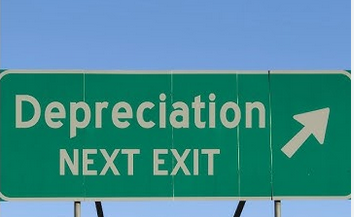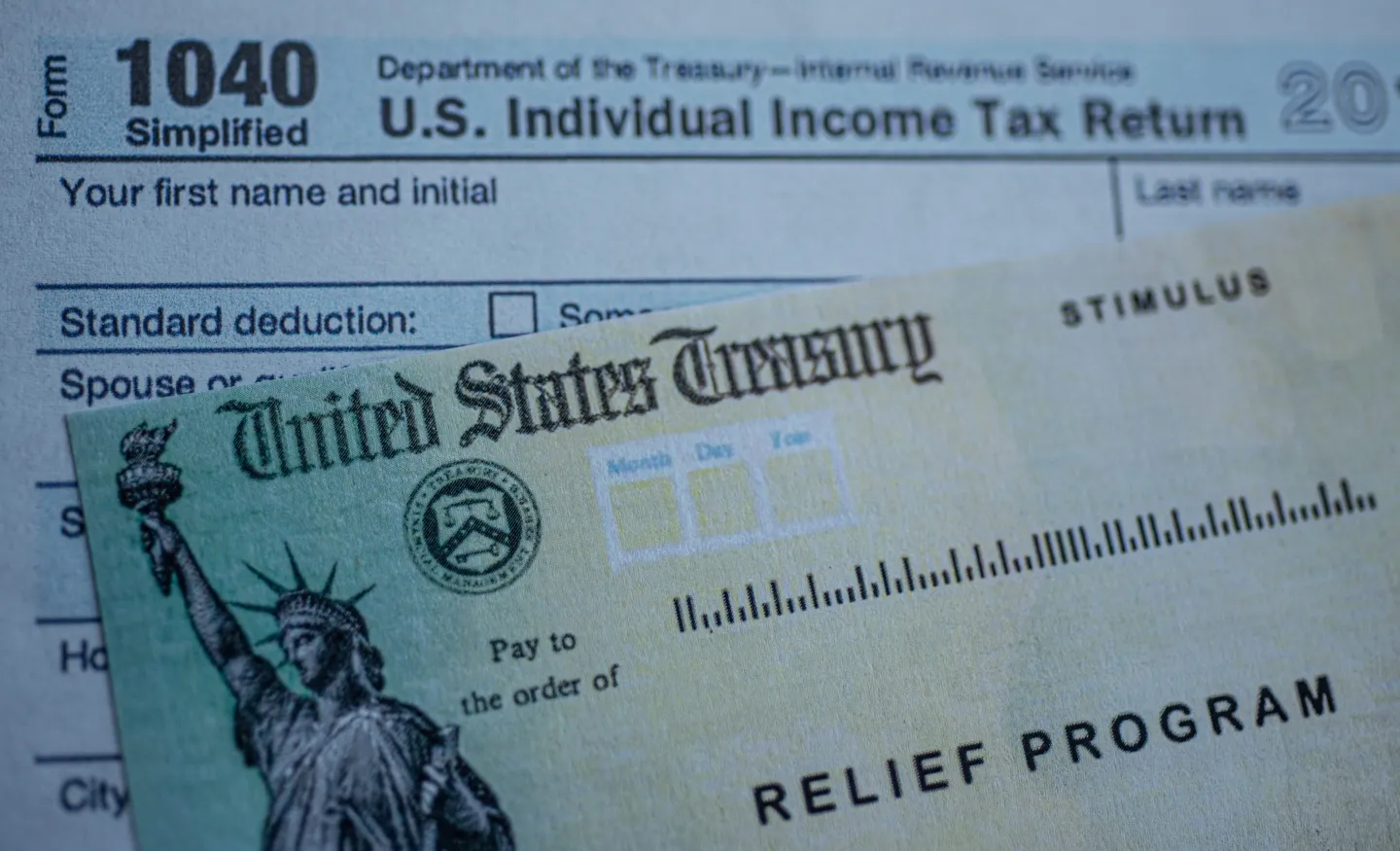By Dr. Brooks Robinson\Black Economics.org
What do you know about imputations? Because you have easy access to the near sum-total of human knowledge at your fingertips, we urge you to use that access to obtain a detailed definition of “imputations.” For simplicity and for purposes of this essay, we define “imputation” to mean estimation or measurement by inference; estimation by proxy; and measurement of an outcome for which complete information is unavailable. The imputation with which we are concerned here is a seemingly innocuous concept known as depreciation.

Those with economics, business, and accounting backgrounds have come to comprehend the depreciation concept. Computation of a depreciation amount begins with the acquisition price or value of a physical (nonfinancial) asset and the knowledge that the asset will deteriorate from use over time—during its useful life.[i ] What is an asset’s useful life? It is difficult to determine the useful life of a nonfinancial asset precisely. That is, seemingly identically produced nonfinancial assets will exhibit different useful lives. However, the economic system, which is managed by government and its taxing authority, classifies physical assets and estimates the “average” useful lives of these assets. Of course, some of the assets will endure for shorter periods and some will endure for longer periods than the average useful life estimated and assigned by tax authorities.
Given the useful life of nonfinancial assets, one can estimate depreciation rates. Interestingly, the depreciation rate concept opened the door to great creativity in developing several depreciation methods: e.g., Straight line, accelerated, declining balance, double declining balance, etc.
Starting with the acquisition price/value of a nonfinancial asset, given its assigned useful life, and adopting a particular depreciation method and related depreciation rate, one can estimate the amount of depreciation that occurs during a particular accounting period.[ii]
Those in business—whether corporations, partnerships, sole proprietorship, or even households (that operate small farms or rental properties)—are extended the right through tax laws to earn receipts/income by producing goods or services, then to reduce the receipts/income by subtracting/deducting a depreciation amount before determining their net operating surplus/net income, their taxable income, and the amount of taxes that are owed.[iii]
Why are “businesses” extended this right? One can rationalize that this right is extended because businesses contribute to the smooth functioning of the economy. Businesses use “their” financial resources (existing assets or by incurring liabilities) to acquire nonfinancial assets that are employed in business to produce receipts/income. The receipts/income enable society, including government, to provide jobs for others, which lessens the burden of government to provide for those who cannot provide for themselves. In addition, “businesses” pay taxes to government, which enables government to perform its functions.[iv]
Before going to the heart of the essay, please be clear about the following crucial point. Businesses that purchase nonfinancial assets can benefit from depreciation expenses/deductions as long as they own assets. However, it is often the case that those who purchase nonfinancial assets do not retain them for the assets’ entire useful lives. Consequently, when one business sells its nonfinancial assets to another business, the new owner begins leveraging the assets’ depreciation anew using the acquisition prices/values.

Now to the primary points of this essay. How much is depreciation worth? Given that official tax statistics are not yet published by the Internal Revenue Service (IRS) for years that appear to be unaffected by the Covid-19 Pandemic (i.e., post-2022), we selected the 2019 tax year as period of analysis, which precedes the pandemic. The IRS reports that individual(noncorporate) income tax returns reflected total depreciation of $178.1 billion.[v] For corporate tax returns, total reported depreciation was $1,176.8 billion.[vi] Given estimated 2019 effective tax rates for individuals (20.3%) and for corporations (10.9%), we estimate that the just listed depreciation amounts permitted individuals and corporations to, ostensibly, reduce their Federal tax payments by $36.2 billion and $127.7 billion, respectively.[vii] (We make no effort to estimate related tax reductions at the state and local levels.) Note that, while the $36.2 billion estimated tax “benefit” would remain with individuals, the $127.7 billion corporate tax “benefit” might also flow as dividends to individuals, who own shares (stock) in corporations.
If we assume the latter, and if we make a very generous estimate of Black America’s share of business and stock ownership at about 10% of the national total, then about $147.5 billion arrived in non-Black Americans’ hands from business activity during 2019 through the depreciation imputation. Consider that this is an annual ongoing phenomenon. For comparison, recognize that, using Federal Reserve Board estimates of Black net worth (wealth) for 2019 as reflected in the Survey of Consumer Finances, the just cited $147.5 billion represents about 5.8% of total Black American wealth (~$2.5 trillion) in 2019.[viii] Now imagine how much progress is likely to be made in closing the Black – non-Black wealth gap when considered for the 2019 tax year. Black Americans faced the prospect of increasing our net worth or wealth by about 0.6% through the depreciation imputation, but non-Blacks stood to increase their net worth to the tune of about 5.8% of Black American net worth.
Notice that beyond receipt of gifts, the basis on which one can gain access to this “free” source of money (through the depreciation expense/deduction) is to gain ownership of nonfinancial assets (using own or borrowed resources).[ix] The last sentence should raise a bright red sign that reads: Black Americans have confronted an unending list of historical efforts/tactics to limit or prevent our acquisition of financial and nonfinancial resources that other racial and ethnic groups have not confronted in the US.
Hence, access to the very nature of the American system and its entire raison d’être (“America’s business is doing business”) has been denied in large measure to Black Americans. This is not to say that we could not have made different historical decisions to improve our economic plight.
However, even if we had benefited from different approaches to building our lives and wealth in the US, there is irrefutable historical evidence that Black American economic success has elicited violent opposition from non-Black Americans: viz., Rosewood, Florida; Tulsa, Oklahoma; Wilmington, North Carolina; Oscarville, Georgia; etc. This history narrates how mainly White Americans spared no efforts to deny Black Americans the right to grow and flourish economically.
Black Americans continue to experience barriers to acquiring assets today. Other racial and ethnic groups, however, are extended more opportunities to acquire nonfinancial assets to generate receipts/income, which they can depreciate, reduce their receipts/net income in each accounting period using depreciation deductions, reduce their taxable income and taxes owed, and use the resulting “free money” to continue expanding the Black – non-Black wealth gap. The depreciation imputation is just one of many examples of how the US Federal Government contributes to a widening of inequality in the nation. Also, this injurious imputation is a reason the US Government should move expeditiously to forge a speedy path to mutually agreed Black American Reparations.

Dr. Brooks Robinson is the founder of the Black Economics.org website.
References:
[i] The exception to this idea is the “one hoss shay,” which is a nonfinancial asset that works perfectly and with unchanged efficiency until the very end of its useful life at which time it suddenly fails to operate.
[ii] Here, we are limiting the accounting period to just one year.
[iii] Depreciation is joined by a plethora of other deductions, allowances, and credits that can reduce taxable income and the related tax bill.
[iv] According to the Statistics of Income Branch of the Internal Revenue Service, individuals owed $1.7 trillion in taxes in 2019 (see Form 1040 in the source cited in Endnote v), while corporations owed $383 billion in taxes (see the row 8, column K in the source cited in Endnote vi).
[v] This $178.1 billion statistic is from Statistics of Income (2021), Individual Income Tax Returns Line Item
Estimates 2019, (Publication 4801); https://www.irs.gov/statistics/soi-tax-stats-individual-income-tax-returns-line-item-estimates-publications-4801-and-5385 (Ret. 101024). The estimate provided is the sum of depreciation amounts claimed on line 13 of Schedule C, Line 18 of Schedule E, and line14 of Schedule F. Be certain to review the version of these forms in Publication 4801 that reflects estimates for “all returns.”
[vi] The statistic for the depreciation deduction for corporations is from row 8, column P, of the EXCEL file that presents, “Table 1. Selected Income Statement, Balance Sheet and Tax Items and Coefficients of Variation, by Minor Industry, Tax Year 2019.” The table can be found at: https://www.irs.gov/statistics/soi-tax-stats-corporation-income-tax-returns-complete-report-publication-16 (Ret. 101024).
[vii ]We estimate these effective tax rates using a “total tax” amount to “total income” amount ratio for individuals and corporations. For individuals, “total income” is “gross income.” For corporation, “total income” is “net income.” The sources for these income and tax values are cited in Endnotes v and vi.
[viii] See Federal Reserve Board of Governors (2023). Changes in U.S. Family Finances from 2019 to 2022: Evidence from the Survey of Consumer Finances; https://www.federalreserve.gov/econres/scfindex.htm (Ret. 101124).
[ix] Accountants may argue that the amount of the depreciation deduction is not “free money” because depreciation amounts should be set aside each period and allowed to accumulate so that that resources will be available to replace existing nonfinancial assets when their useful lives conclude. Our argument is that after the initial investment, which is a venture in risk, business owners receive a continuous flow of “free money” in the form of depreciation that can be used for consumption, investment, or other purposes.





